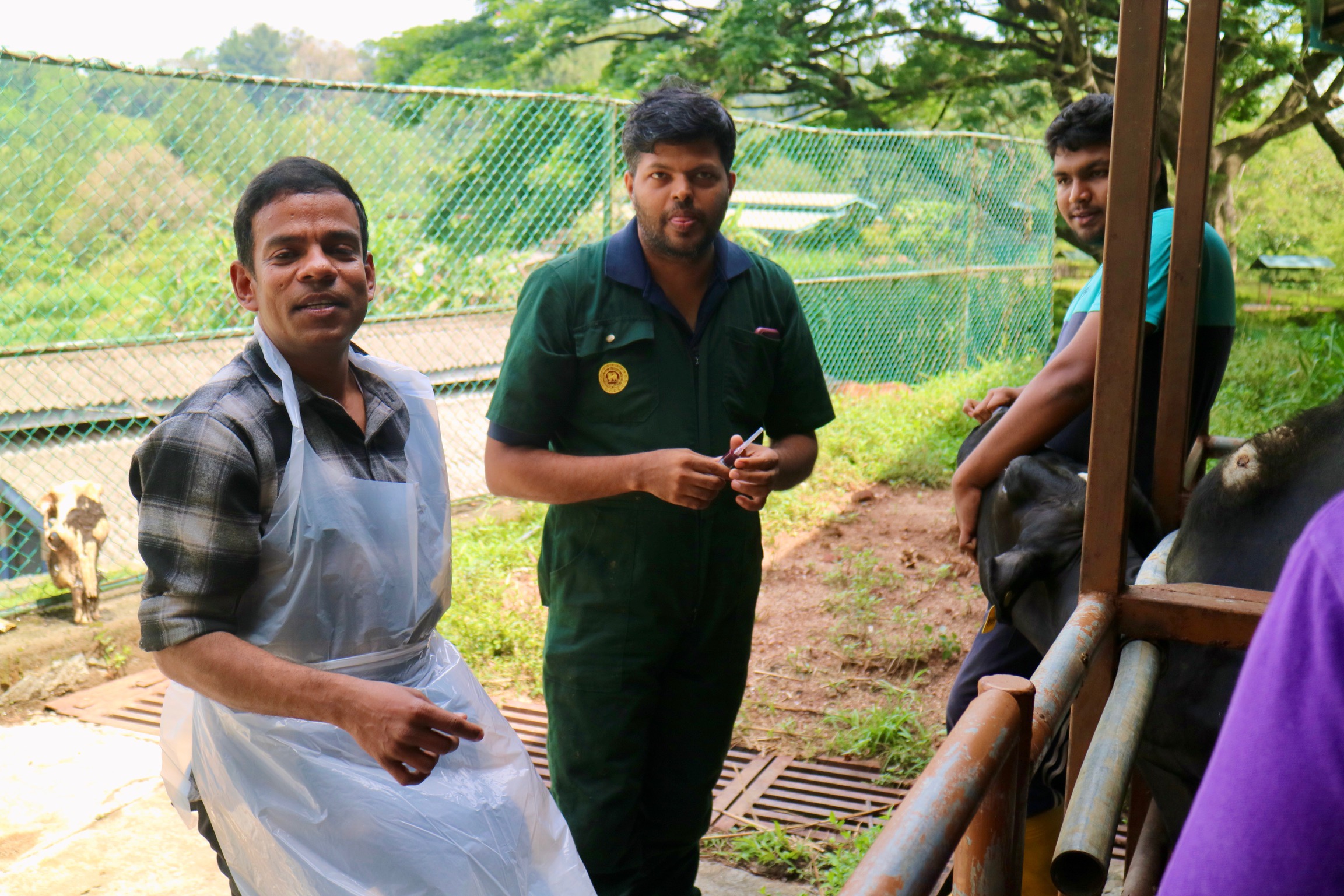Thillaiampalam Sivakumar Associate Professor
My DreamToward Global Control of Animal Piroplasmosis
ThemeControl of bovine and equine piroplasmosis through diagnosis, surveillance, and drug discovery
Field
Keyword
Instructable research topic for doctoral thesis
- 牛および馬のピロプラズマ症に対する治療薬の開発
- 牛および馬に感染するバベシア・タイレリア原虫の世界的監視
- バベシアもしくはタイレリアに感染した牛や馬の臨床的影響の解析
- 動物原虫病の診断法の開発と活用
Message
私たちの研究室では、実験室での発見を畜産や臨床の現場に役立てることを大切にしています。学生の皆さんには、研究の楽しさを体感しながら、獣医師として感染症を制御する力を身につけ、将来現場で活躍できる力を育んでほしいです。研究や臨床に挑戦したい学生を歓迎します。
| Academic degree | Doctor of Animal and Food Hygiene |
| License | Veterinarian |
| Self introduction |
I am originally from the Jaffna Peninsula in Sri Lanka. After completing high school, I entered the Faculty of Veterinary Medicine and Animal Science at the University of Peradeniya and graduated as a veterinarian. My first visit to Japan was in 2007 as a JICA trainee at the National Research Center for Protozoan Diseases, Obihiro University of Agriculture and Veterinary Medicine. Inspired by the advanced research conducted at the Center, I returned as a Ph.D. student and, after graduation, continued my research activities there. My research focuses on the evolution, epidemiology, genetic diversity, and clinical significance of protozoan parasites that cause bovine and equine piroplasmosis. |
| Room address | National Research Center for Protozoan Diseases |
| Room number | 101 |
| Mail address | siva  obihiro.ac.jp
obihiro.ac.jp |
Belongs
National Research Center for Protozoan Diseases/Department of Disease Control/Research Unit for Molecular DiagnosticsResearch Center for Global Agromedicine/Department of Veterinary MedicineIntroduction
My research focuses on protozoan parasites that cause piroplasmosis in cattle and horses, mainly Babesia and Theileria species. These tick-borne parasites cause severe anemia, fever, and productivity loss, leading to major economic damage in livestock industries worldwide. At the National Research Center for Protozoan Diseases, I have been studying their genetic diversity, evolution, and distribution to better understand the epidemiology and clinical significance of these infections.
Our recent studies identified two novel tick-borne protozoan species, Babesia naoakii and Theileria sp. Yokoyama, both of which can cause severe clinical disease in cattle. These findings highlight the need for continuous molecular surveillance to detect emerging pathogens that threaten livestock health.
In our laboratory, we combine molecular diagnostics, field surveillance, and parasite culture studies to investigate the relationships between parasite genotypes, host species, and disease symptoms. We are also engaged in discovering and evaluating new drug candidates for the treatment of bovine theileriosis, aiming to develop safe and effective therapeutic strategies.
Through close collaboration with the World Organisation for Animal Health (WOAH) Reference Centers, my goal is to contribute to the global control of animal piroplasmosis. By integrating diagnosis, surveillance, and drug discovery approaches, I hope to establish practical countermeasures that will support sustainable livestock production and improve animal health worldwide.


List of current research topics
Global surveillance of bovine and equine piroplasmosis
Investigation of the clinical significance of Babesia and Theileria parasites in cattle and horses
Development of improved diagnostic assays for equine piroplasmosis
Drug discovery for the control of bovine and equine piroplasmosis
| Related industries | Livestock, Global equine trade, Veterinary pharmaceuticals, Field veterinary medicine |
| Affiliated academic society | The Japanese Society of Veterinary Science |
| Academic background | 2003: Graduated from Faculty of Veterinary Medicine and Animal Science, University of Peradeniya, Sri Lanka. 2008: Completed Diploma in Advanced Research Course on Control of Zoonosis for Food Safety, National Research Center for Protozoan Diseases, Obihiro University of Agriculture and Veterinary Medicine. 2013: Completed a Doctoral program in Animal and Food Hygiene, Graduate School of Animal Science, Obihiro University of Agriculture and Veterinary Medicine. |



.jpg)


